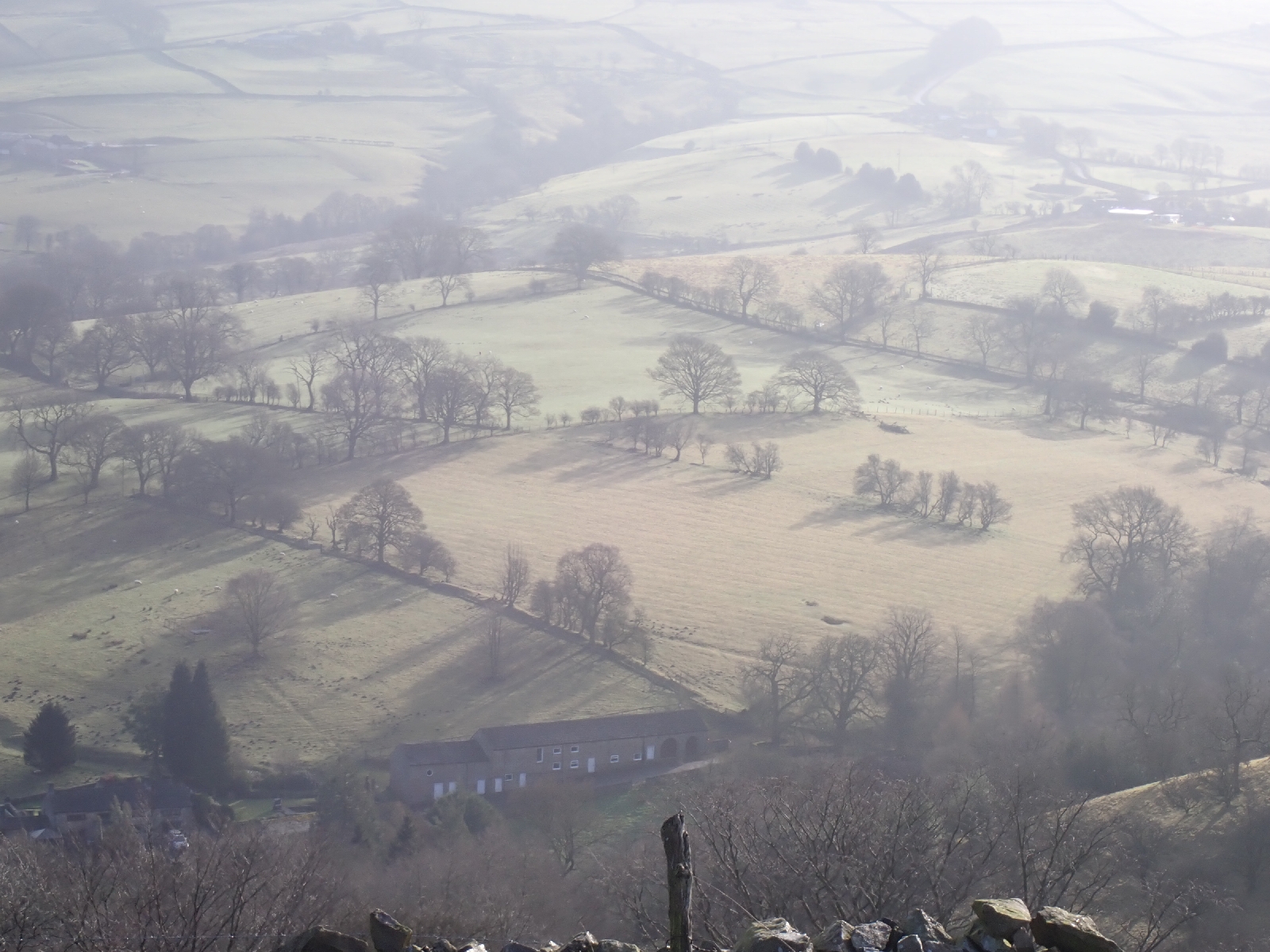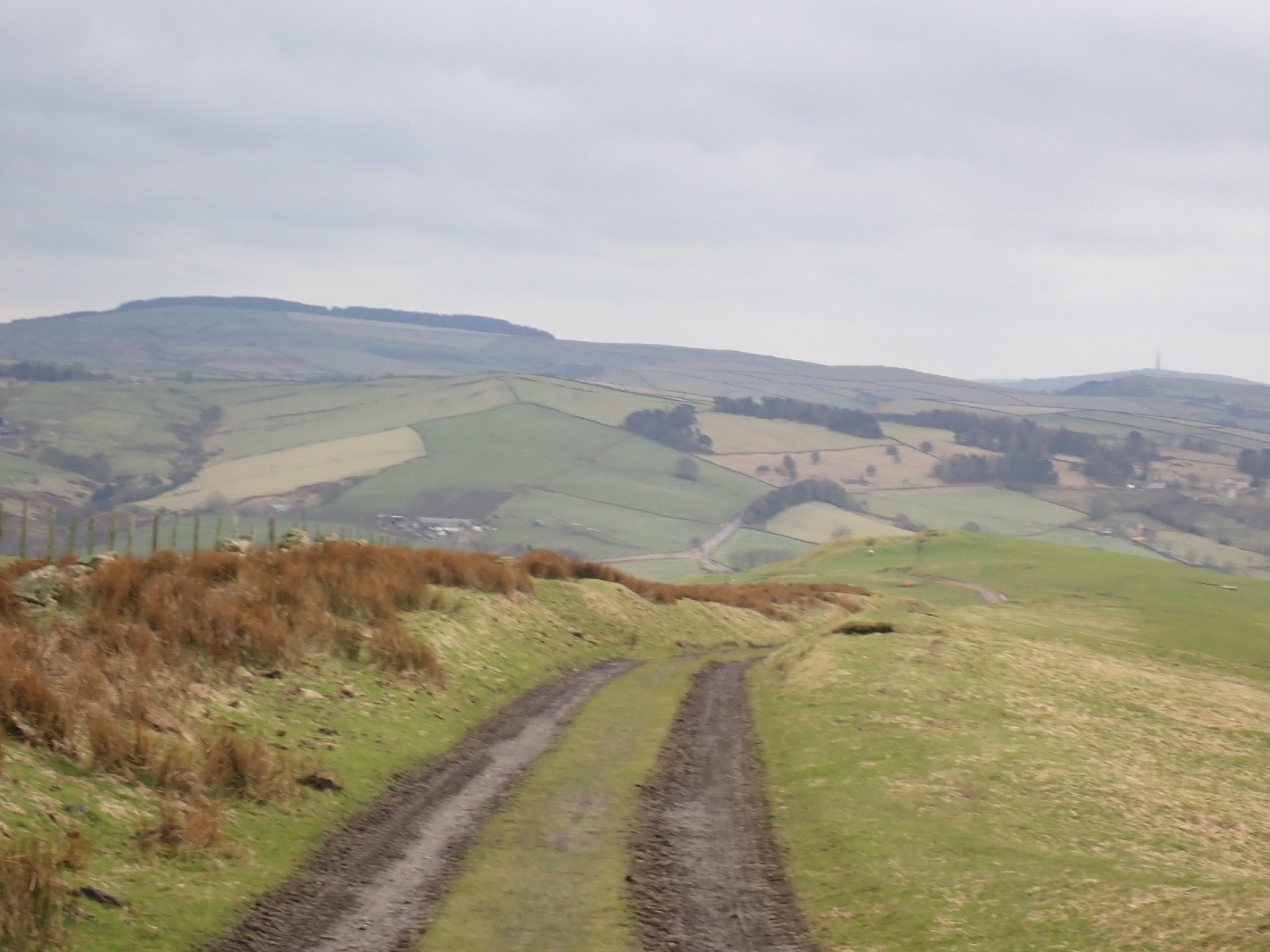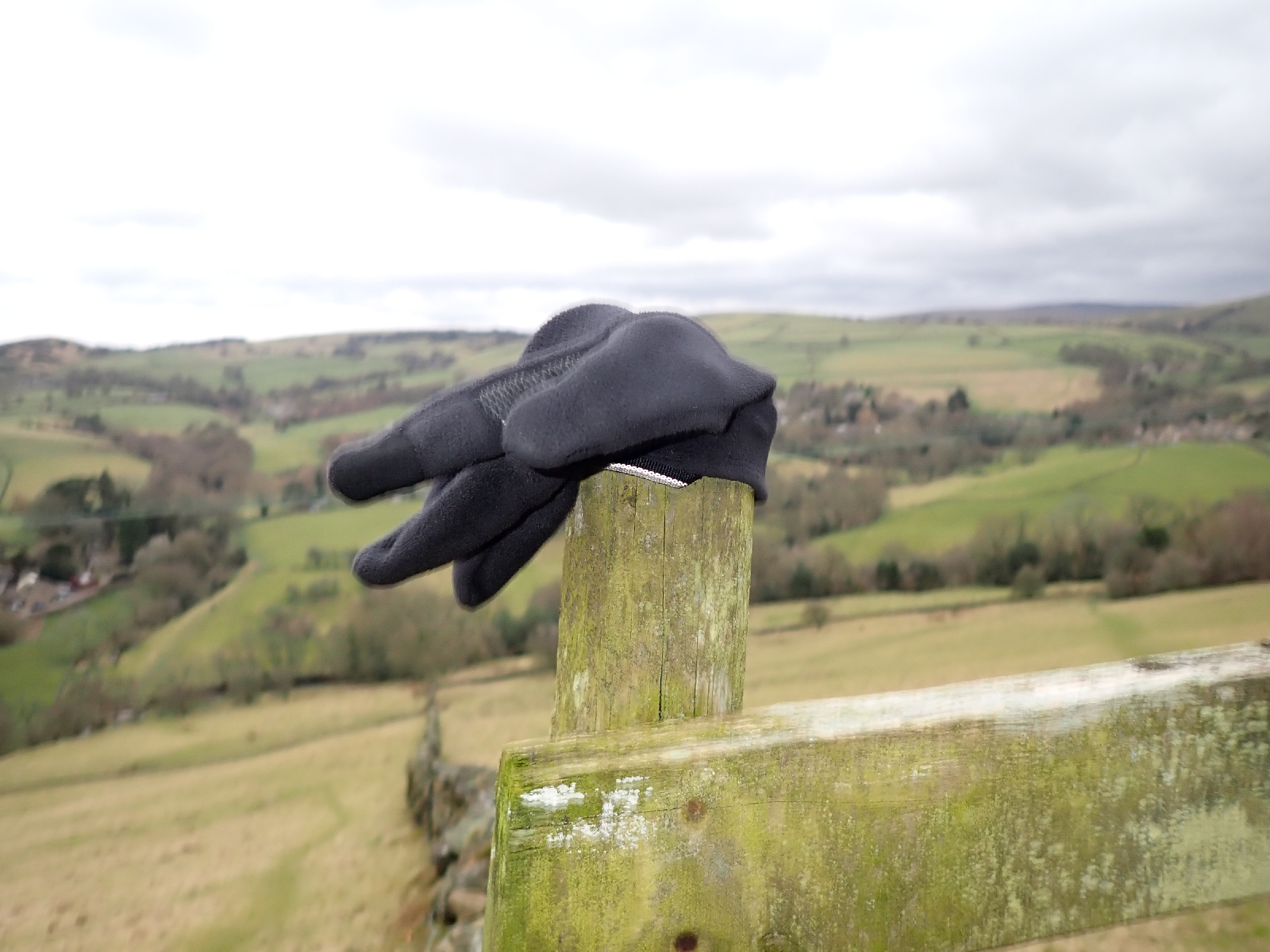An icy day on Pen-y-ghent followed by a climb into more snow before dropping down to Malham Cove.
Over breakfast with my sister and brother-in-law the owner of the bed & breakfast regaled us with various topics including his low view of the Pen-y-ghent cafe being closed and the lack of preparedness for some of those undertaking the Yorkshire Three Peaks Challenge among other things. The Three Peaks Challenge involved climbing Pen-y-ghent, Ingleborough and Whernside within 12 hours. At one time it appears you signed in at the Pen-y-ghent cafe when you started and when you finished, that way if you did not return due to a problem, someone would know. There is now no café in Horton-in-Ribblesdale despite the popularity of the village with walkers and runners, at least none open in February.
After hugging my sister and reassuring her I would manage the steep climb down from Pen-y-ghent, despite the ice and snow that covered the peak, I started off for the mountain, ignoring the owner of the bed & breakfast who suggested that I bypassed it. As he correctly predicted, I was not be able to see anything through the cloud enveloping the summit. I was not alone on the mountain. Whether because it was Saturday or maybe they were in organised groups, many people were climbing the mountain, almost all heading in the opposite direction to me as they tackled the Three Peaks Challenge. The climb up I did not find difficult, I could easily avoid icy sections of path by walking on the snow beside it. Going down from the summit, the Pennine Way drops steeply through an outcrop of rocks, requiring a little light scrambling, easy when the rocks are dry but they were treacherously wet and icy. When I reached the top of the outcrop a large and seemingly endless line of people were coming up what I assumed was the principal route. Seeing footprints in the snow suggesting others had chosen a different way down I followed that, carefully and cautiously climbing down a series of broken ledges of rock. However the final drop worried me, when testing a foothold my boot gained no grip. My rucksack impeded my movements. Seeing a competent looking hiker coming up I asked him to "brace" me. I took off my rucksack and placed it on a ledge, then he kindly stood prepared to support me if I slipped. In fact I didn't but I was glad I asked for help rather than risk a fall.
 |
| Ice, elongated by the wind, on a drystone wall on the summit of Pen-y-ghent. |
 |
| People gathered on the summit. |
After the Pennine Way departed from the Three Peaks route the trail became quieter, although I passed a group of girls twice as they ran first one way, then turned around and ran back, heading like me for Malham. I thought it was an all girl group but was proved wrong, the men were trailing far behind.
After descending from Pen-y-ghent and walking a short section of road below the snowline, I began the next climb, a climb I did not remember from earlier trips. The trail I was following might have been created to serve mining operations, for once I reached the plateau a sign warned against leaving the path due to open, unmarked, mine shafts. The high ground was again in snow and ice which cleared as I approached Malham Tarn. This was a big lake with National Trust buildings among trees on its north side. The trees seemed out of place, a patch of woodland among open moorland of faded grass and reeds, or fields of close cropped grass. Many people were visiting the Tarn, emanating from a nearby car park. A few were standing by the lake side looking at the water as it dissolved into the mist.
 |
| Malham Tarn. |
From Malham Tarn the Pennine Way followed a dry valley down to Malham Cove. A dry valley like this was typical of limestone country. The water which once ran down the valley now travels through underground fissure and caves. At the end of the valley was a limestone pavement above a tall, curved cliff called Malham Cove, water wells up from the base of the cliff at the end of its underground journey. The "pavement" consisted of blocks of limestone called "clints" separated by fissures called "grykes". These fissures were created by rainwater slowly dissolving the limestone over many millennia. I followed the Pennine Way over the pavement, climbing onto the clints. Although this was something I had done several times before, today was different. The limestone, smoothed by both rainwater and the passage of many visiting feet, was wet and slippery. Access to the pavement involved walking through mud. My muddled boots had trouble gaining purchase on the wet rock. Recognising I was in difficulty I tried to effect a sideways exit. As the clints at the side were more eroded into curved channels this proved tricky. Before I had gone too far I slipped and fell. A passing hiker asked if I had broken anything, one of my trekking poles was the only casualty, now unnaturally bent. My pride had also taken a tumble. I should have been more gracious to the person who was enquiring if I was OK but I was cross at my own incompetence.
 |
| Limestone pavement at the top of Malham Cove. |
Maybe my mind was on the possibility of coffee and cake in Malham village. In this I was disappointed. I arrived at the café at 4:00 pm, just as it was closing. I did acquire a takeaway coffee from a machine at the village store bit it felt second best. Accommodation in Malham was either excessively expensive, full or closed for the winter, consequently I had booked a Bed & Breakfast in the village of Airton, an additional hour's walking down the Pennine Way in a valley beside a river. My hosts generously provided tea and a scone on my arrival, then drove me to the Victoria pub so I could buy dinner for myself. I am now back enjoying the warmth of my room as tomorrow I am planning to camp, having discovered no place to stay in Ickornshaw.




















































